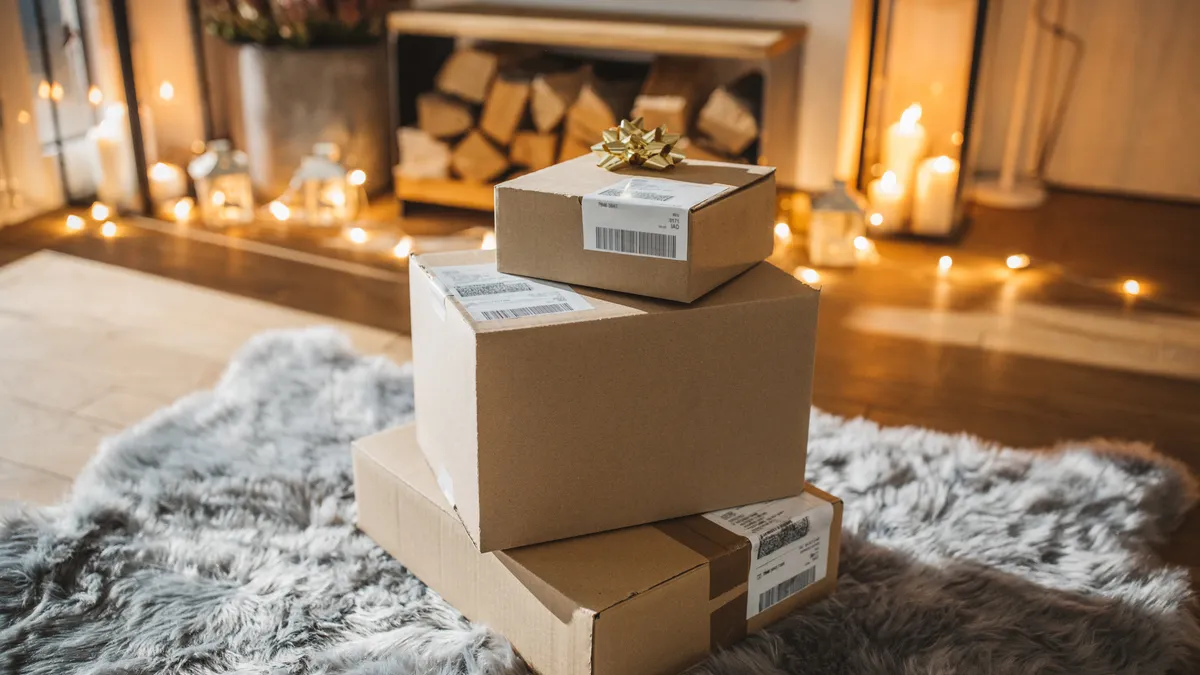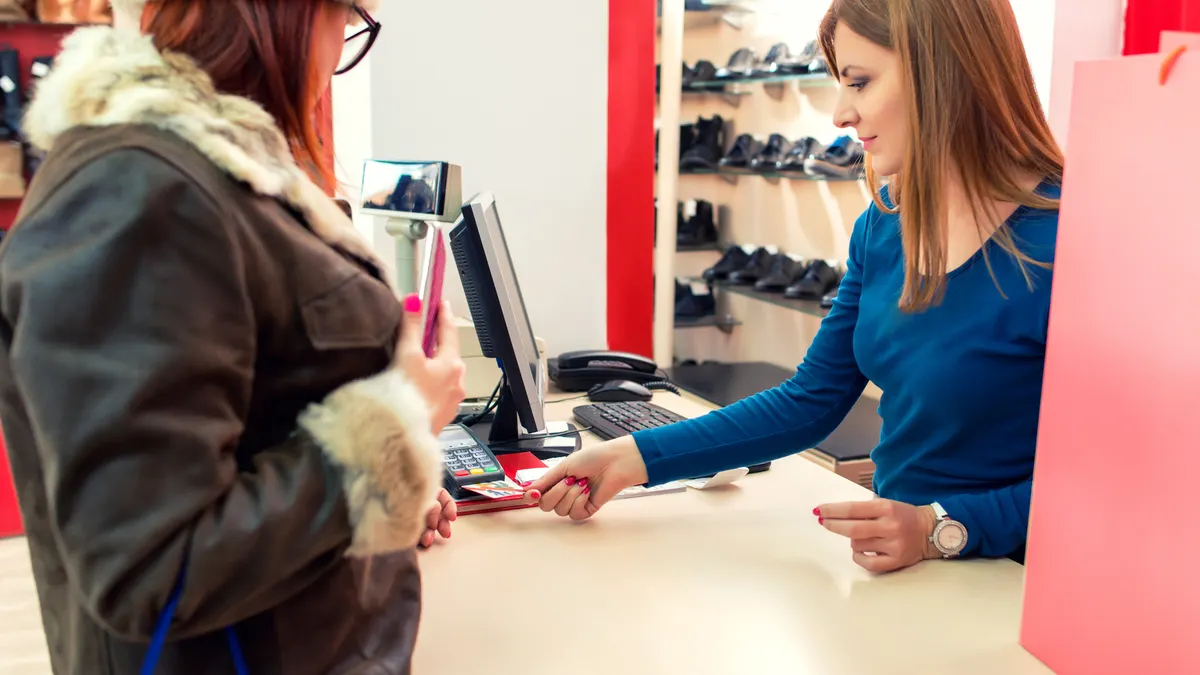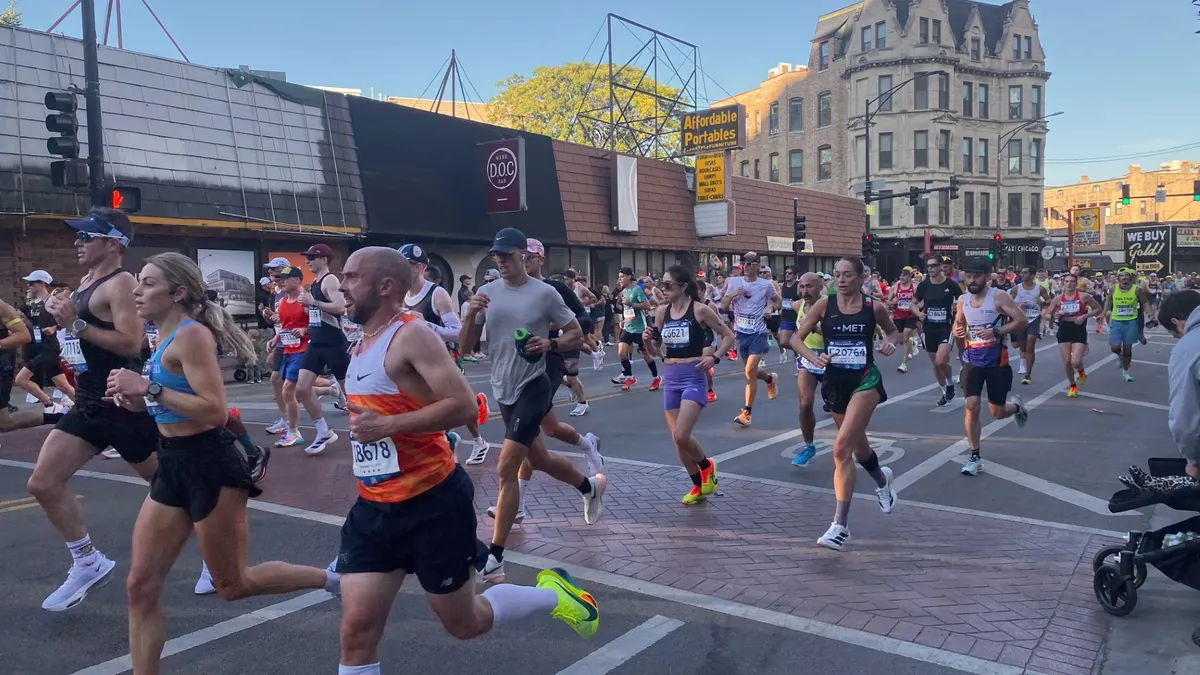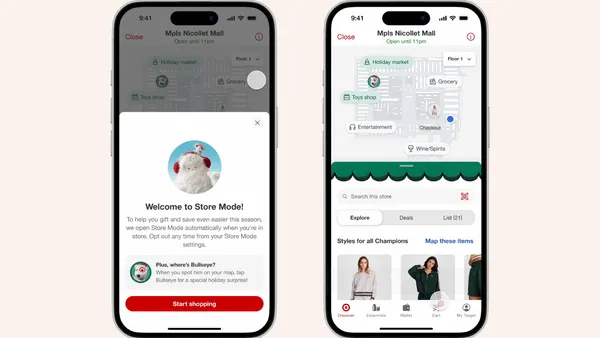It's a special form of madness to get up before the sun comes up on Black Friday. More specifically, to get up at 3:30 in the morning, drive 40 minutes to reach the "premium" outlets and start your holiday shopping when store associates are at their most bitter. But it's my form of madness.
And while the main event might be shopping, there's plenty to be gained from being out and about before everybody else opens their eyes. As an example, by noon my Fitbit had recorded 10,000 steps, and I was driving out of my second mall of the day, on my way to grab some well-deserved food as a line of cars stood waiting to enter the parking lot.
Personal accomplishments aside, being a consumer on retail's biggest shopping day of the year is also beneficial to anyone looking for insights on merchandising, customer experience and maintaining the employee-customer relationship when it's 5 o'clock in the morning and Ariana Grande's Christmas album is on for the third time in as many hours.
Death by out-of-stocks
Whoever says Black Friday is just a day clearly hasn't shopped it. The deals on Black Friday were everywhere — discounted payment plans for the iPhone X, 50% off entire stores, and gaming consoles bundled with the hottest releases. The last of these included the PlayStation 4 Spider-Man bundle, the one big, fat blot on my otherwise perfect scoresheet.
I found out about the deal late, but decided to try for it anyway the morning of. Why? Because my most recent gaming console came out in 2006.
It was already sold out everywhere online and was only being listed at a select few stores as "in stock." With a strong sense of urgency and a nervous energy that only comes with being awake for five hours in the middle of the night, I arrived three minutes after the store opened to find empty shelves and a store associate who wasn't quite sure what the inventory level was.
After a disappointing conversation where my heart lifted on hearing there might be two in stock and then came crashing down as he returned, empty-handed, I learned (or relearned) a few key things about Black Friday. The first being: having an accurate stock count is really important on make-or-break sales days. Customers rely on retailers, and their associates, for product information — and they expect it to be the same in-store and online.
Listing a hot product as "in stock" online and not having it in stores when customers come knocking is a recipe for disappointment, frustration and potentially even lost loyalty. A study in July reported that 15% of customers who encountered an out-of-stock on a retailer's website just switched sites.
My failed attempts to procure a PS4 also reinforced one of the most talked-about trends with the sales holiday: Black Friday isn't a day anymore, it's a week. That gaming console I wanted — pitched as a Black Friday special — was barely available on Black Friday. It was on sale for a full week and was practically sold out by Thanksgiving.
Waking up at 3:30 a.m. on Black Friday did nothing to secure me the best deals. Maybe extended sales periods are a good thing for retailers because it means more sales, but it also means a Black Friday that's slowly dwindling in excitement.
What's special about Black Friday when you can shop it on Thanksgiving? On Cyber Monday? For a whole week? When you can get the same deals for seven days, some of the luster of one big shopping day to rule them all fades.
Not to say that Black Friday isn't still a massive holiday. Early predictions pointed to $6.4 billion in sales, well above the $5 billion that came in the year before. When all was said and done, the holiday raked in $6.22 billion in online sales, up 23.6% year over year.
The case for clear signage
Black Friday is by far my largest shopping trip of the year. When it comes to holiday shopping, I fall into the category of consumers who have finished most of their gift buying by December. As a result, I walked in and out of a lot of stores this year, with a sharp eye out for how much I was saving (or not saving) by shopping a specific retailer.
The expectation has become, "If you're open on Black Friday, you have a deal." But shoppers need to know, clearly, what that deal is. Most retailers had big signs in either their windows or just inside the entryway, calling out to shoppers — "40% off the entire store," "Everything buy one, get one free!" — but the amount of signage varied drastically after the front stoop.
Perhaps the most frustrating part of shopping on Black Friday was finding something promising, checking the price tag, and then searching around wildly for the discount. Several times, I found myself asking one of my family members, "What's the discount in this store again?" and then walking back out to the front to check the sign.
This became even more frustrating for stores that weren't running a simple "40% off everything" deal. The more caveats that retailers had in their discounts, the more annoying it became to try and figure out what was and wasn't on sale. Not only did that make shopping difficult at some stores, but it also meant that retailers with clear signs on every rack — "50% off clearance," "30% off accessories" — got more of my spend than ones that made it hard for me to figure out.
Even more importantly, poor signage on discounts meant more frustrated customers fighting for what they thought the price was or should be — and more store associates having to play it by ear when discounts weren't made clear. "I'm about to tell this guy these jeans are on discount, so they're $25 if he buys them," one employee told the cashiers, brandishing a pair of jeans at them as she ran back to a customer on the floor.
"She really wanted her discount, didn't she?" I heard a different employee mutter to another at the checkout counter, chuckling in the way of someone who just had to put up with way more emotions than they wanted to.
These weren't the only strung-out employees I came across. The crazy crowds and the unclear deals made shells out of several formerly cheerful employees. One store manager thanked my family for not making them print out a gift receipt after they'd forgotten to do it the first time around and another stood behind the counter, speaking words of encouragement into his headset.
"It's almost 7 o'clock, guys — that means a lot of you will be heading out, so let's just hold on and be patient until we can switch everyone out," he said as a woman stood next to his shoulder trying to ask him why her bag was beeping when she tried to leave the store.
These are likely the sounds of Black Friday at just about any store, but having a clearly communicated strategy for discounts made it much easier for both shoppers and store associates to make it through the day unscathed.
So yes, getting up at 3:30 on Black Friday might be crazy, but maybe it takes a little bit of crazy to see the patterns in retail's most insane shopping day.



















